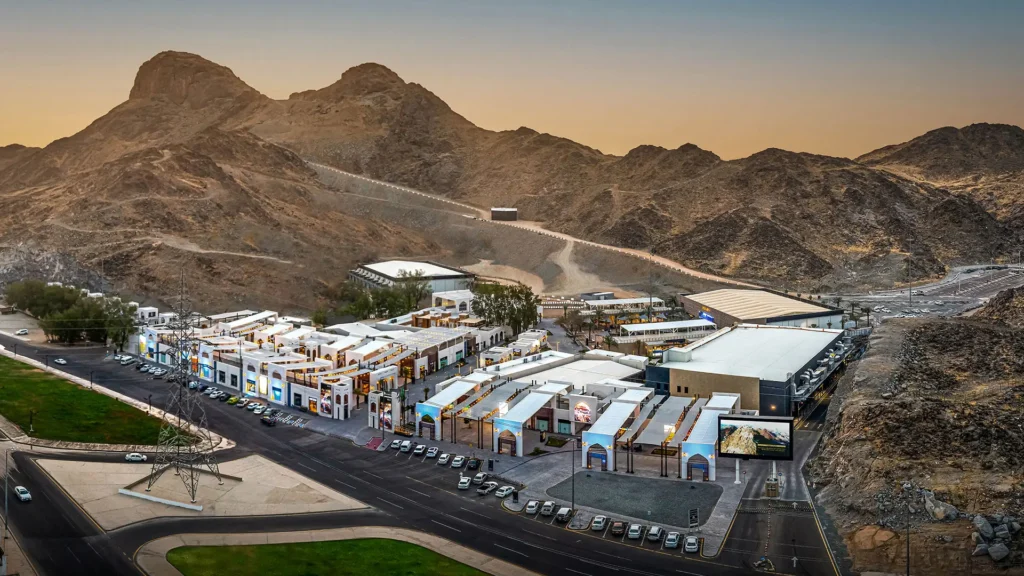

Pic Courtesy : Hihala
Welcome to the Hira Cultural District, a captivating blend of history and heritage nestled in the heart of Saudi Arabia. This vibrant district invites visitors to experience a journey through time, where ancient traditions meet modern aspirations. With its profound significance, it serves as a testament to cultural preservation while showcasing the rich legacy of Islam. Whether you’re an avid historian or simply curious about this unique locale, the Hira Cultural District promises an enriching adventure that celebrates both faith and community. Ready to explore? Let’s dive into what makes this area so special!
Exploring the Hira Cultural District: A Journey Through History and Heritage
The Hira Cultural District stands as a beacon of historical and cultural significance. Located near the revered Mount Hira, it offers visitors an immersive experience into the heart of Islamic heritage. The district’s design incorporates traditional architecture alongside modern facilities.
As you wander through its pathways, you’ll encounter various landmarks that narrate stories from centuries past. Each corner reveals rich tales tied to spirituality and community life in early Islam.
Moreover, this vibrant area fosters a sense of belonging for both locals and tourists alike. It invites exploration while emphasizing educational experiences about the profound impact of history on current practices and beliefs within Islam.
Introduction to Hira Cultural District
The Hira Cultural District is a unique destination that captures the essence of historical and cultural significance in Saudi Arabia. Nestled near the sacred site of Jabal al-Nour, it serves as a bridge between the past and present.
This vibrant area invites visitors to explore its rich heritage while promoting knowledge about Islamic history. It’s an essential pilgrimage point for those seeking spiritual enlightenment and education.
As you step into this district, you will find a blend of modern architecture alongside traditional elements that showcase the region’s legacy. The Hira Cultural District not only honors significant historical events but also fosters community engagement through various activities and programs designed to enrich understanding of Islamic culture.
Significance and Location
The Hira Cultural District holds immense significance as a pivotal site in Islamic history. Located near the sacred city of Mecca, it is closely associated with the profound spiritual experiences of Prophet Muhammad (PBUH). This area serves as a beacon for pilgrims and visitors alike, drawing them to its rich heritage.
Positioned on Jabal al-Nour, Hira overlooks the Kaaba, making it an essential point of reflection for many. The district’s location offers breathtaking views that enhance its spiritual ambiance.
Access to this culturally vital region allows visitors to immerse themselves in both historical and religious contexts. The blend of natural beauty and deep-rooted significance makes the Hira Cultural District a must-visit destination for those exploring Islam’s foundational narratives.
Entities Overseeing Hira Cultural District
The Hira Cultural District is overseen by various entities dedicated to preserving its heritage and promoting cultural activities. The Ministry of Culture plays a pivotal role, providing guidance and support through their initiatives aimed at enhancing the district’s significance.
Additionally, local authorities collaborate closely with national organizations to ensure the effective management of resources. This partnership fosters community involvement while safeguarding the historical essence of Hira.
Cultural foundations also contribute by organizing events that celebrate the rich history present in the district. These collaborative efforts help maintain Hira’s status as an important site for both locals and visitors alike, ensuring that its legacy continues to thrive for generations to come.
Inauguration and History
The Hira Cultural District was officially inaugurated on a notable date, marking a significant milestone in the preservation of Islamic heritage. This initiative aims to celebrate and showcase the rich historical narratives woven into the fabric of Mecca.
Historically, this area is renowned for its deep-rooted connection to religious events and figures. It sits close to Mount Hira, where Prophet Muhammad (PBUH) received his first revelation, making it an essential site for millions around the world.
With careful planning and execution, the district has transformed into a vibrant cultural hub. It offers educational experiences that highlight its storied past while ensuring that visitors can appreciate both history and spirituality intertwined within this sacred landscape.
Project Objectives
The Hira Cultural District aims to preserve and promote the rich history of the region. By highlighting its cultural significance, this project seeks to educate visitors about the profound heritage attached to Hira.
Another key objective is enhancing tourism in the area. The district will provide a unique experience for both local residents and international travelers, offering insights into Islamic history and culture.
Furthermore, the project emphasizes community engagement. Local artists and historians will be involved in showcasing their work, fostering a sense of pride among residents while creating opportunities for economic growth through tourism-related activities.
Components of the District
The Hira Cultural District is designed to celebrate and preserve Islamic heritage. This vibrant area features various components that reflect its historical significance. Visitors can explore museums, art galleries, and educational centers dedicated to showcasing the rich culture of Islam.
One of the key components includes a visitor center that provides information about the district’s history and its ongoing projects. Interactive exhibits engage tourists, making their experience both enjoyable and informative.
Additionally, beautifully landscaped parks invite relaxation and reflection amidst the bustling activities. Each component works harmoniously to create an atmosphere where history comes alive, ensuring visitors leave with a deeper understanding of this sacred site’s immense value in Islamic tradition.
Maqam Ibrahim (PBUH) and Its Contents
Maqam Ibrahim (PBUH) holds a pivotal role in Islamic heritage, located within the Hira Cultural District. This sacred site is believed to be the place where Prophet Ibrahim stood while building the Kaaba. It symbolizes faith, devotion, and sacrifice.
The structure features an ancient stone known as the “Footprint of Ibrahim.” This unique impression is revered by pilgrims who visit to connect spiritually with their faith’s roots. Surrounding this footprint are intricate designs that reflect historical craftsmanship.
Visitors can also find inscriptions highlighting significant events from Islamic history. These elements serve as a reminder of Prophet Ibrahim’s legacy and his unwavering commitment to God’s will, making Maqam Ibrahim a focal point for both reflection and learning in this cultural district.
Imams of the Grand Mosque at Hira Cultural District
The Imams of the Grand Mosque at Hira Cultural District play a pivotal role in preserving and promoting the spiritual heritage of this unique area. They guide worshippers through prayer, lectures, and community engagement. Their teachings reflect the values embedded within Islamic tradition while fostering an atmosphere of peace and understanding.
These esteemed figures also participate in various cultural programs that emphasize the importance of history and faith. By connecting people with their roots, they enrich the experience of visitors exploring Hira’s rich heritage. The presence of these Imams underscores not only religious devotion but also a commitment to education and unity within the community.
As you explore the Hira Cultural District, visiting or engaging with its institutions offers invaluable insights into both historical significance and contemporary relevance. This makes it a truly enriching destination for anyone interested in culture, history, or spirituality.
